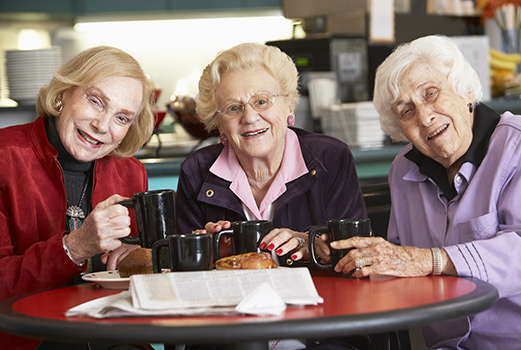
26% of us live with disabilities. Do you?
Let’s start with the numbers. According to the Centers for Disease Control, 26 percent of us live with one or more disabilities, the most common being mobility impairments. Nearly 14 percent of us are unable or would have great difficulty walking any distance or climbing steps. That’s over 46 million Americans. The United States, and the entire world for that matter, is experiencing an unprecedented demographic shift. We’re aging dramatically and in a few short years, the old will outnumber the young. Baby boomers will all be over 65 and will outnumber those eighteen and under. The good news is that we’re healthier and will live longer than the generations before us. But that’s a double-edged sword — longevity doesn’t mean we’ll remain nimble and able-bodied. As our population ages, the number of us with mobility impairments will escalate and have profound implications for our communities.
No place like home
The social issues of living with a disability are obvious but that never keeps me from talking about them. Most of us don’t want age or impairments to force us out of our homes. Most people would prefer not to move into a senior living facility, but staying at home can lead to social isolation, loneliness and depression. Physical impairments can make it challenging to venture out; many people decide that it’s safer to stay home. That’s the easy course to take and it becomes a hard habit to break. I speak from experience as I’ve used a walker and now I use a wheelchair.
But if you go…
Moving to a senior living facility can lead to age-based segregation and a loss of autonomy. For me, my home is my identity. It’s mine and it’s where I feel a sense of belonging. It’s filled with my memories and my history. All of that is painful to relinquish. Senior living facilities offer safety, socialization and peace of mind. Many provide everything anyone could need without ever having to leave, and that’s another double-edged sword. Never having to set foot in the surrounding community is not necessarily good for the individual and it certainly isn’t good for the community, which could benefit from the demographic diversity and the economic impact.
Follow the money
Speaking of the economic impact, let’s look at who has money. Adults over 50 own more than three-fourths of the nation’s financial wealth, have incomes 26 percent higher than the national average and spend more than one trillion dollars each year on goods and services. If seniors don’t feel welcome and invited to participate in their neighborhoods, the local communities will suffer financial repercussions from the loss of this essential consumer group. Extrapolated out over a decade, the economic impact will be huge.
Better communities
Besides the somewhat obvious social, emotional and physical benefits for the person aging and/or living with impairments, communities benefit from diversity. Studies have shown that children who have participated in multigenerational daycare programs have much more favorable opinions of older adults. The same is true for children who are exposed to people with any type of disability. Young people who grow up aware of people’s differences and different abilities are more likely to be accepting of age differences and behaviors as adults. Diversity — when differences including race, ethnicity, religion, gender, economic, age and ability are all represented — makes our communities richer.
Todd Hanson, FAIA is a principal at JSA Design headquartered in Portsmouth, NH. In 2016, he founded Access Navigators, an online resource helping people with disabilities plan ahead for visiting historic New England. Questions? Get in touch: thanson@jsainc.com.


